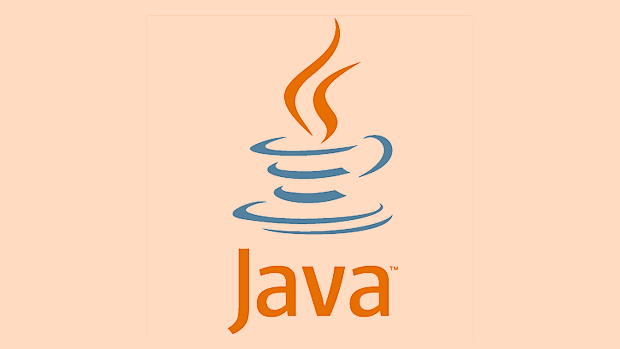There are two common methods in Java. 1. Use Arrays.sort(): convert two strings into a character array, and compare whether they are equal after sorting, and the time complexity is O(n log n); 2. Use character counting method: compare by counting the number of occurrences of each character, the time complexity is O(n), which is more efficient but slightly complicated. Both methods need to first determine whether the string length is the same, and then decide whether to handle case, space or non-alphabetical characters according to the requirements.

To determine whether two strings are anagrams, in Java, you can achieve this by comparing the sorting results of their characters. As long as the two strings have the same length and the types and quantities of characters they contain are consistent, they are all asymptotes regardless of the order.

Method 1: Use Arrays.sort()
This is the easiest and most straightforward way. Convert two strings into a character array and compare whether they are equal after sorting.
import java.util.Arrays;
public class AnagramChecker {
public static boolean isAnagram(String str1, String str2) {
if (str1.length() != str2.length()) {
return false;
}
char[] charArray1 = str1.toCharArray();
char[] charArray2 = str2.toCharArray();
Arrays.sort(charArray1);
Arrays.sort(charArray2);
return Arrays.equals(charArray1, charArray2);
}
}illustrate:

- First check whether the lengths of the two strings are consistent, and if they are inconsistent, return false directly.
- Then convert the string into a character array.
- Sorts two character arrays.
- Finally, use
Arrays.equals()to compare whether the two arrays are the same.
The time complexity of this method is about O(n log n), mainly the time spent in sorting.
Method 2: Use character counting (not sorting)
If you do not want to sort, you can use an array of size 256 to count the number of occurrences of each character (applicable to the ASCII character set).

public class AnagramChecker {
public static boolean isAnagram(String str1, String str2) {
if (str1.length() != str2.length()) {
return false;
}
int[] count = new int[256];
for (char c : str1.toCharArray()) {
count[c] ;
}
for (char c : str2.toCharArray()) {
count[c]--;
if (count[c] < 0) {
return false;
}
}
return true;
}
}illustrate:
- Also, first determine whether the length is consistent.
- Create an array of length 256 to record the occurrences of each character.
- The first loop goes through the first string and counts each character to increase the count.
- The second loop traverses the second string, subtracting the count of the corresponding characters each time.
- If the count of a character is less than 0, it means that it is not an asymptotment.
- Finally, there is no need to check whether the entire array is 0, because the previous one has ensured that the length is consistent.
This method has a time complexity of O(n), which is more efficient, and is especially suitable for processing longer strings.
Notes and FAQs
Ignore case? If you want to ignore case, you can convert it to lowercase or uppercase before comparison:
str1 = str1.toLowerCase(); str2 = str2.toLowerCase();
Remove spaces? If the input may contain spaces and wish to ignore them:
str1 = str1.replaceAll("\\s ", ""); str2 = str2.replaceAll("\\s ", "");Non-alphabetical characters? If you only care about letters, you can filter out other characters:
str1 = str1.replaceAll("[^a-zA-Z]", ""); str2 = str2.replaceAll("[^a-zA-Z]", "");These preprocessing steps can be flexibly added according to specific needs.
Basically that's it. The two methods have their own applicable scenarios. The sorting method is simple and intuitive, and the character counting method is more efficient but slightly more complicated. Just choose according to actual needs.
The above is the detailed content of How to check if two strings are anagrams in Java?. For more information, please follow other related articles on the PHP Chinese website!

Hot AI Tools

Undress AI Tool
Undress images for free

Undresser.AI Undress
AI-powered app for creating realistic nude photos

AI Clothes Remover
Online AI tool for removing clothes from photos.

Clothoff.io
AI clothes remover

Video Face Swap
Swap faces in any video effortlessly with our completely free AI face swap tool!

Hot Article

Hot Tools

Notepad++7.3.1
Easy-to-use and free code editor

SublimeText3 Chinese version
Chinese version, very easy to use

Zend Studio 13.0.1
Powerful PHP integrated development environment

Dreamweaver CS6
Visual web development tools

SublimeText3 Mac version
God-level code editing software (SublimeText3)

Hot Topics
 Applying Semantic Structure with article, section, and aside in HTML
Jul 05, 2025 am 02:03 AM
Applying Semantic Structure with article, section, and aside in HTML
Jul 05, 2025 am 02:03 AM
The rational use of semantic tags in HTML can improve page structure clarity, accessibility and SEO effects. 1. Used for independent content blocks, such as blog posts or comments, it must be self-contained; 2. Used for classification related content, usually including titles, and is suitable for different modules of the page; 3. Used for auxiliary information related to the main content but not core, such as sidebar recommendations or author profiles. In actual development, labels should be combined and other, avoid excessive nesting, keep the structure simple, and verify the rationality of the structure through developer tools.
 The requested operation requires elevation Windows
Jul 04, 2025 am 02:58 AM
The requested operation requires elevation Windows
Jul 04, 2025 am 02:58 AM
When you encounter the prompt "This operation requires escalation of permissions", it means that you need administrator permissions to continue. Solutions include: 1. Right-click the "Run as Administrator" program or set the shortcut to always run as an administrator; 2. Check whether the current account is an administrator account, if not, switch or request administrator assistance; 3. Use administrator permissions to open a command prompt or PowerShell to execute relevant commands; 4. Bypass the restrictions by obtaining file ownership or modifying the registry when necessary, but such operations need to be cautious and fully understand the risks. Confirm permission identity and try the above methods usually solve the problem.
 Differences Between Callable and Runnable in Java
Jul 04, 2025 am 02:50 AM
Differences Between Callable and Runnable in Java
Jul 04, 2025 am 02:50 AM
There are three main differences between Callable and Runnable in Java. First, the callable method can return the result, suitable for tasks that need to return values, such as Callable; while the run() method of Runnable has no return value, suitable for tasks that do not need to return, such as logging. Second, Callable allows to throw checked exceptions to facilitate error transmission; while Runnable must handle exceptions internally. Third, Runnable can be directly passed to Thread or ExecutorService, while Callable can only be submitted to ExecutorService and returns the Future object to
 How Java ClassLoaders Work Internally
Jul 06, 2025 am 02:53 AM
How Java ClassLoaders Work Internally
Jul 06, 2025 am 02:53 AM
Java's class loading mechanism is implemented through ClassLoader, and its core workflow is divided into three stages: loading, linking and initialization. During the loading phase, ClassLoader dynamically reads the bytecode of the class and creates Class objects; links include verifying the correctness of the class, allocating memory to static variables, and parsing symbol references; initialization performs static code blocks and static variable assignments. Class loading adopts the parent delegation model, and prioritizes the parent class loader to find classes, and try Bootstrap, Extension, and ApplicationClassLoader in turn to ensure that the core class library is safe and avoids duplicate loading. Developers can customize ClassLoader, such as URLClassL
 Exploring Different Synchronization Mechanisms in Java
Jul 04, 2025 am 02:53 AM
Exploring Different Synchronization Mechanisms in Java
Jul 04, 2025 am 02:53 AM
Javaprovidesmultiplesynchronizationtoolsforthreadsafety.1.synchronizedblocksensuremutualexclusionbylockingmethodsorspecificcodesections.2.ReentrantLockoffersadvancedcontrol,includingtryLockandfairnesspolicies.3.Conditionvariablesallowthreadstowaitfor
 Handling Common Java Exceptions Effectively
Jul 05, 2025 am 02:35 AM
Handling Common Java Exceptions Effectively
Jul 05, 2025 am 02:35 AM
The key to Java exception handling is to distinguish between checked and unchecked exceptions and use try-catch, finally and logging reasonably. 1. Checked exceptions such as IOException need to be forced to handle, which is suitable for expected external problems; 2. Unchecked exceptions such as NullPointerException are usually caused by program logic errors and are runtime errors; 3. When catching exceptions, they should be specific and clear to avoid general capture of Exception; 4. It is recommended to use try-with-resources to automatically close resources to reduce manual cleaning of code; 5. In exception handling, detailed information should be recorded in combination with log frameworks to facilitate later
 Asynchronous Programming Techniques in Modern Java
Jul 07, 2025 am 02:24 AM
Asynchronous Programming Techniques in Modern Java
Jul 07, 2025 am 02:24 AM
Java supports asynchronous programming including the use of CompletableFuture, responsive streams (such as ProjectReactor), and virtual threads in Java19. 1.CompletableFuture improves code readability and maintenance through chain calls, and supports task orchestration and exception handling; 2. ProjectReactor provides Mono and Flux types to implement responsive programming, with backpressure mechanism and rich operators; 3. Virtual threads reduce concurrency costs, are suitable for I/O-intensive tasks, and are lighter and easier to expand than traditional platform threads. Each method has applicable scenarios, and appropriate tools should be selected according to your needs and mixed models should be avoided to maintain simplicity
 What is the purpose of the `static` keyword in Java?
Jul 05, 2025 am 02:36 AM
What is the purpose of the `static` keyword in Java?
Jul 05, 2025 am 02:36 AM
Static keywords are used in Java to create variables and methods that belong to the class itself, rather than instances of the class. 1. Static variables are shared by instances of all classes and are suitable for storing data shared by all objects, such as schoolName in the Student class. 2. Static methods belong to classes and do not depend on objects. They are often used in tool functions, such as Math.sqrt(), and can only access other static members. 3. Static code blocks are used to perform initialization operations when class loading, such as loading libraries or setting logs. 4. Static inner classes can be instantiated independently of the external class, but non-static members of the external class cannot be accessed. Rational use of static can effectively manage class-level resources and behaviors.






